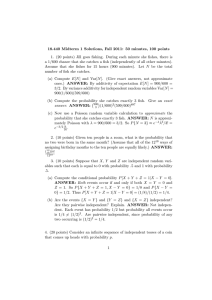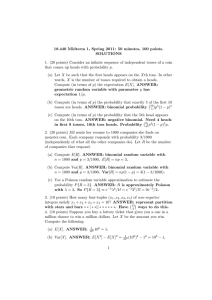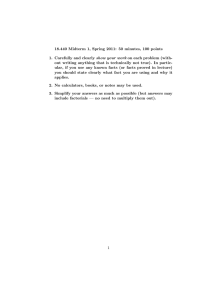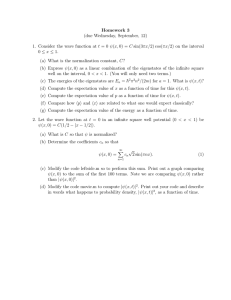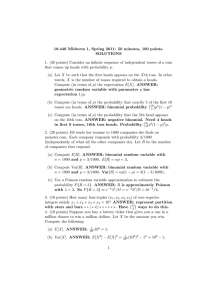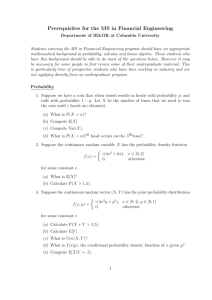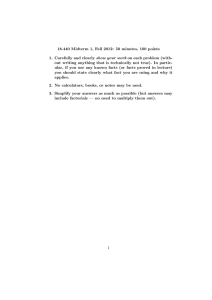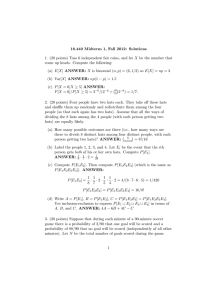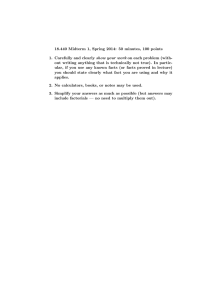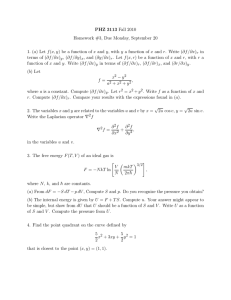18.440 Midterm 1, Fall 2011: 50 minutes, 100 points
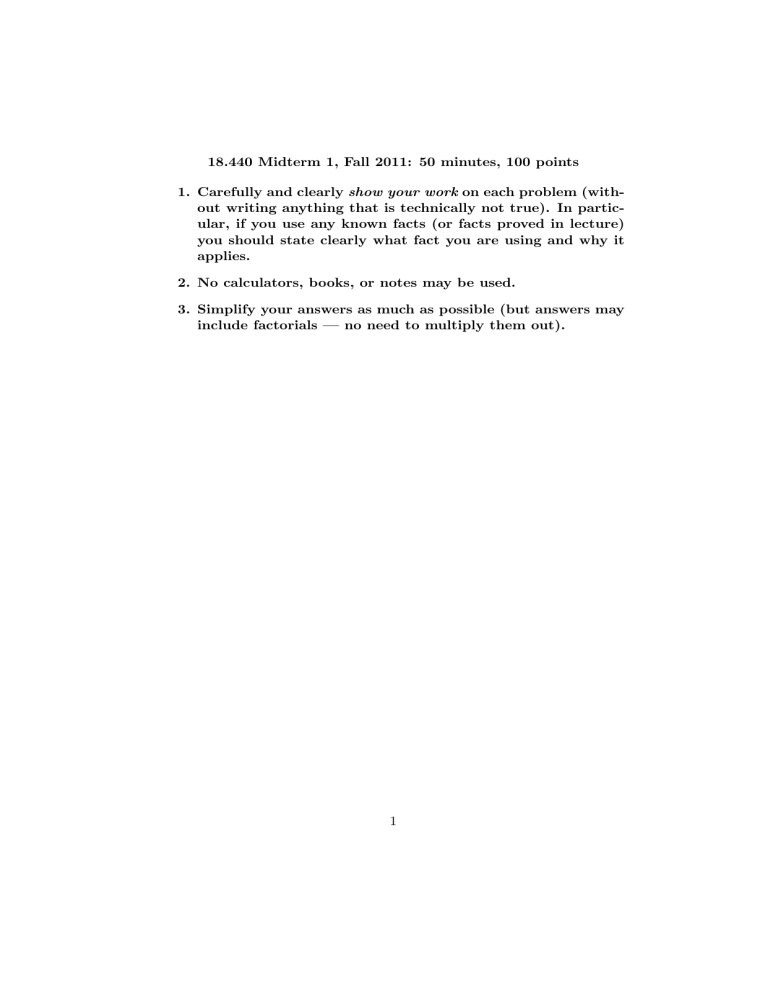
18.440 Midterm 1, Fall 2011: 50 minutes, 100 points
1. Carefully and clearly show your work on each problem (without writing anything that is technically not true). In particular, if you use any known facts (or facts proved in lecture) you should state clearly what fact you are using and why it applies.
2. No calculators, books, or notes may be used.
3. Simplify your answers as much as possible (but answers may include factorials — no need to multiply them out).
1
1. (20 points) Jill goes fishing. During each minute she fishes, there is a 1 / 600 chance that she catches a fish (independently of all other minutes).
Assume that she fishes for 15 hours (900 minutes). Let N be the total number of fish she catches.
(a) Compute
E
[ N ] and Var[ N ]. (Give exact answers, not approximate ones.)
(b) Compute the probability she catches exactly 3 fish. Give an exact answer .
(c) Now use a Poisson random variable calculation to approximate the probability that she catches exactly 3 fish.
2
2. (10 points) Given ten people in a room, what is the probability that no two were born in the same month? (Assume that all of the 12
10 ways of assigning birthday months to the ten people are equally likely.)
3
3. (10 points) Suppose that X , Y and Z are independent random variables such that each is equal to 0 with probability .
5 and 1 with probability
.
5.
(a) Compute the conditional probability P [ X + Y + Z = 1 | X − Y = 0].
(b) Are the events { X = Y } and { Y = Z } and { X = Z } independent?
Are they pairwise independent? Explain.
4
4. (20 points) Consider an infinite sequence of independent tosses of a coin that comes up heads with probability p .
(a) Let X be such that the first heads appears on the X th toss. In other words, X is the number of tosses required to obtain a heads.
Compute (in terms of p ) the expectation and variance of X .
(b) Let Y be such that the fifth heads appears on the Y th toss.
Compute (in terms of p ) the expectation and variance of Y .
5
5. (20 points) Suppose that X is continuous random variable with
( e
− x x > 0 probability density function f
X
( x ) = .
Compute the
0 x < 0 following:
(a) The expectation E [ X ].
(b) The probability P { X ∈ [ − 50 , 50] } .
(c) The cumulative distribution function F
X
.
6
6. (20 points) A group of 52 people (labeled 1 , 2 , 3 , . . . , 52) toss their hats into a box, mix them up, and return one hat to each person (all 52!
permutations equally likely). Compute the following:
(a) The probability that the first 26 people all get their own hats.
(b) The probability that there are 26 pairs of people whose hats are switched: i.e., each pair can be labeled ( a, b ), such that a got b ’s hat and b got a ’s hat.
7
